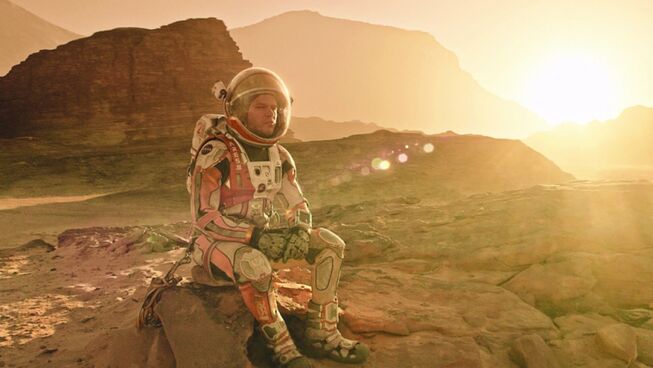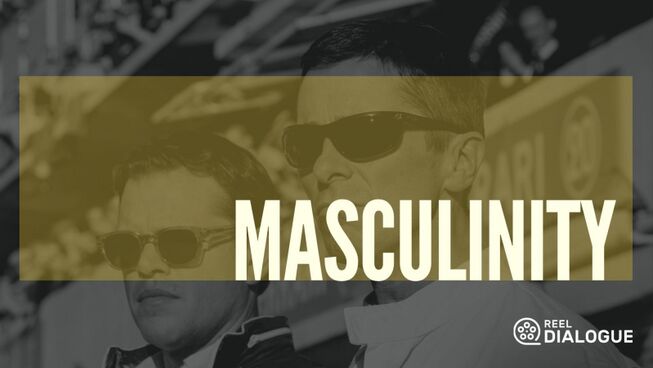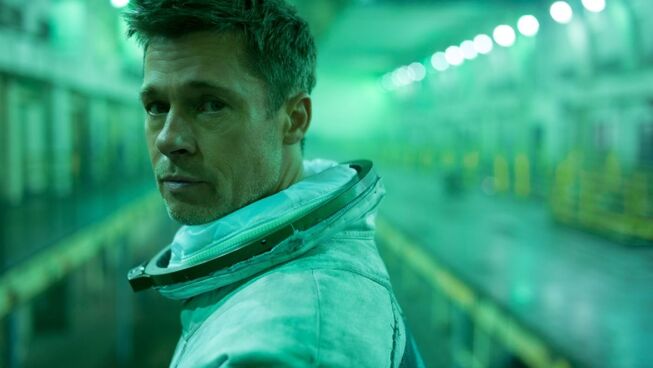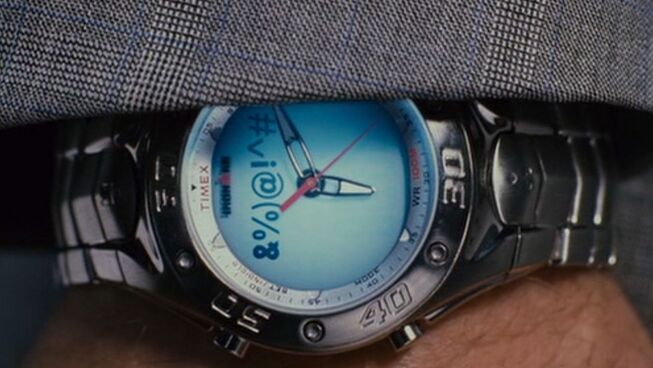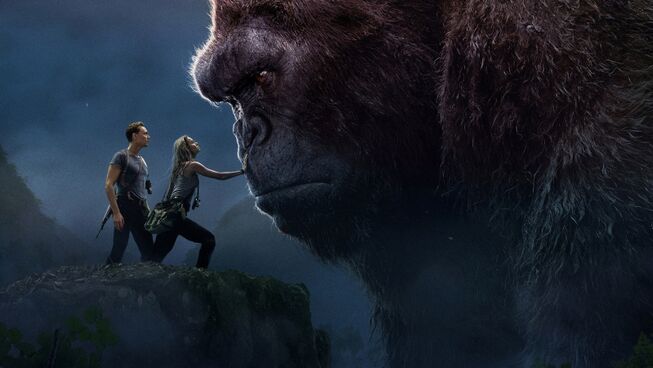
3.5 out of 5 stars
“I never saw Frankenstein or King Kong or the Creature from the Black Lagoon as bad guys. They were the good guys.” Tim Burton
The giant ape has been a film icon since the 1930s and continues to be the subject of countless films, publications and comic books. He is one of the most recognised brands in the film industry and is the inspiration for a new version every decade. There is an underlying understanding that the driving force behind these films will be special effects and action, not necessarily great dialogue or profound plot points.
Even with this knowledge, King Kong’s animal magnetism seems to draw award-winning actors to line up to be on screen with the furry behemoth. From Jessica Lange to Adrian Brody to the one of most recent Academy Award winners, Brie Larson, there is quite a legacy of great acting talent in these films. With minimal expectation of a different storyline, can this latest instalment of the decades old franchise have the same cinematic muscle as its predecessors? Yes, with tongue squarely in cheek and the understanding that audiences will get the very thing that they have come to expect from the historic beast and his human on-screen counterparts.
This rendition begins in 1973, when the world was coming into an era of extreme change and utter political chaos. The Vietnam War was coming to an end and Richard Nixon was still sitting in the Oval Office. Due to the new satellite initiatives of the US government and agency overseeing them, Landset, William Randa (John Goodman) sees a window of opportunity to get an expedition funded. As the senior official in a brother government organisation called Monarch, he has been attempting to get an expedition underway to the South Pacific to explore the uncharted Skull Island. Similar to the legend of the Bermuda Triangle, this area of the world’s oceans had remained uncharted until the introduction of the new satellite system.
With the assistance of a seasoned US military helicopter division led by Colonel Preston Packard (Samuel L Jackson), an award-winning war photojournalist, Mason Weaver (Brie Larson) and a former SAS Captain James Conrad (Tom Hiddleston), Randa leads this odd crew of misfits on this unknown adventure. The apparent goal of this mission is to seek out new geological findings, potential medicinal discoveries and the discovery of new animal species, but as the team arrives at their destination, the ulterior motives of the Monarch are made clear. Randa and his crew are forced to disclose their priorities as the whole entourage is confronted by the beastly inhabitants of the island. They must figure out how to survive and determine how to confront these beasts who are led by none other than the giant gorilla, Kong.
The quintessential primate villain is back, but in a new twist to his role as the anti-hero. Throughout the opening sequences of Skull Island, there are no surprises in his vicious attack on the invading human hoard. The king of the island hideaway does all he can to protect his territory. He is the defender of all inhabitants that are above ground, which include the local native human tribe. Director Jordan Vogt-Roberts (The Kings of Summer) takes his central character down a slightly varied path as a visceral defender of this land of behemoth creatures. Even to the point of him being labelled a god and filling the role of saviour to all creatures great and small. Even when he is under attack by Colonel Packard and his soldiers or the other worldly ‘Skull-crushers,’ Kong manages to maintain his distinctive nature of patron-saint of Skull Island. Vogt-Roberts underlying homage to Apocalypse Now does add a nostalgic edge, but does not change the familiar King Kong tone of the film.
The star-studded cast all play to their cliched roles and are bit players in this monster focussed adventure. Even though they are strong figures, very few prove to be anything other than a specific ‘type’ of character that has all been seen before. The key highlight of the human players has to be the inclusion of John C. Reilly (Wreck-it Ralph) as the stranded WWII flying ace. He provides the needed levity to the science-fiction action and becomes the heart of the whole story. His is a shining light amongst the rest of the cast’s relative perfunctory performances. It comes down to the realisation that this is Kong’s film. It is predictable and formulaic, but it still proves to work for audiences. There is nothing new to add to the canon of King Kong films, but it provides a mindless escape to enjoy some light entertainment and popcorn at the flicks.
REEL DIALOGUE: What are some of the bigger questions to consider from this film?
“We’re brutalizing the audience. We’re going to end up like the Roman circus, live at the Coliseum. The respect for human life seems to be eroding.” Orson Wells, 1970 conversation with Peter Bagdonovich about violence in film (Hollywood Reporter)
How should Christians respond to violence in the cinema?
Christianity and violence: why “thick” religion promotes peace: Miroslav Volf from Yale Divinity School is a professor of theology and author of a number of books and articles. His latest work is A Public Faith: How Followers of Christ Should Serve the Common Good. In this interview he discusses the relationship between Christianity and violence and why he believes more religion is the key to reducing violence. Watch the video here.

